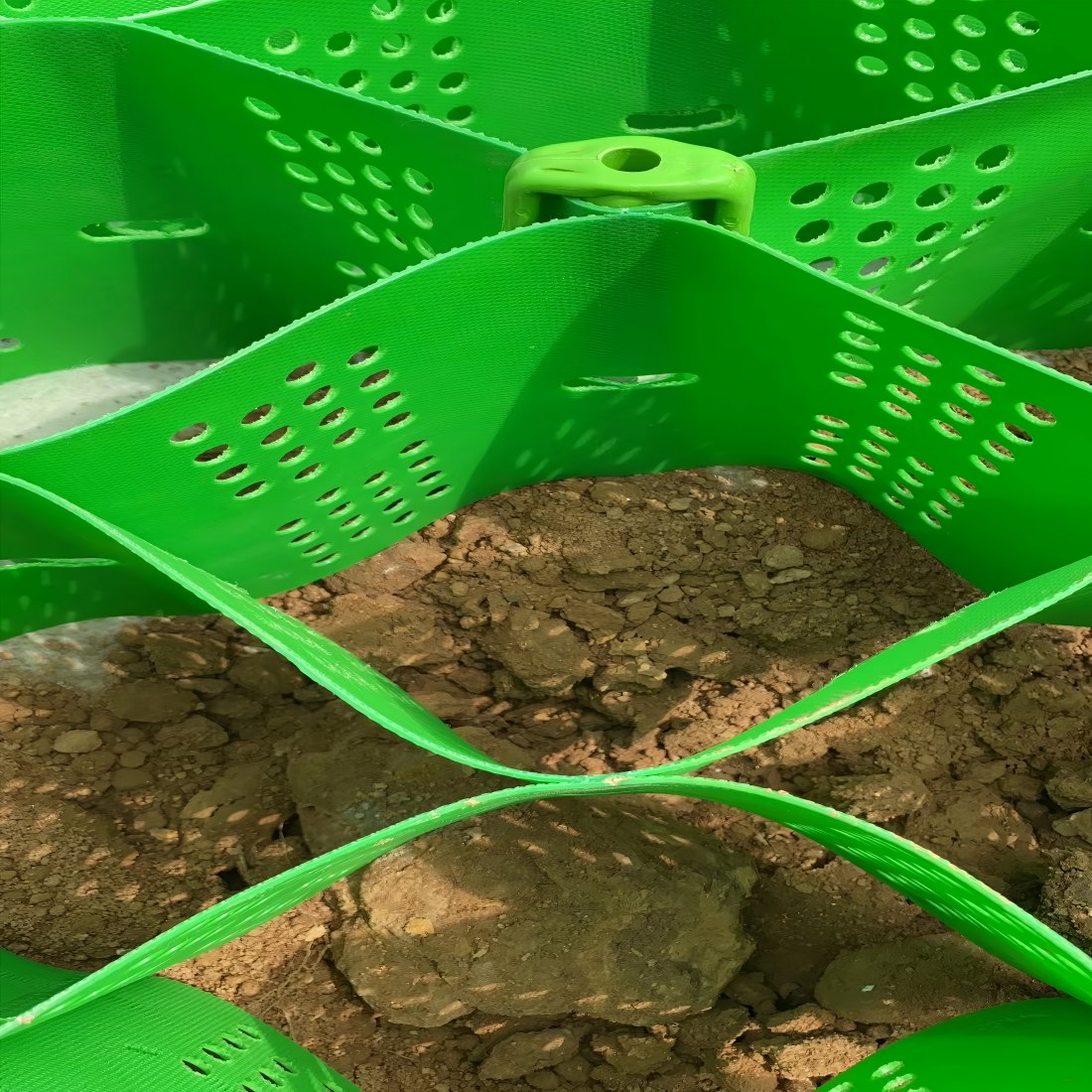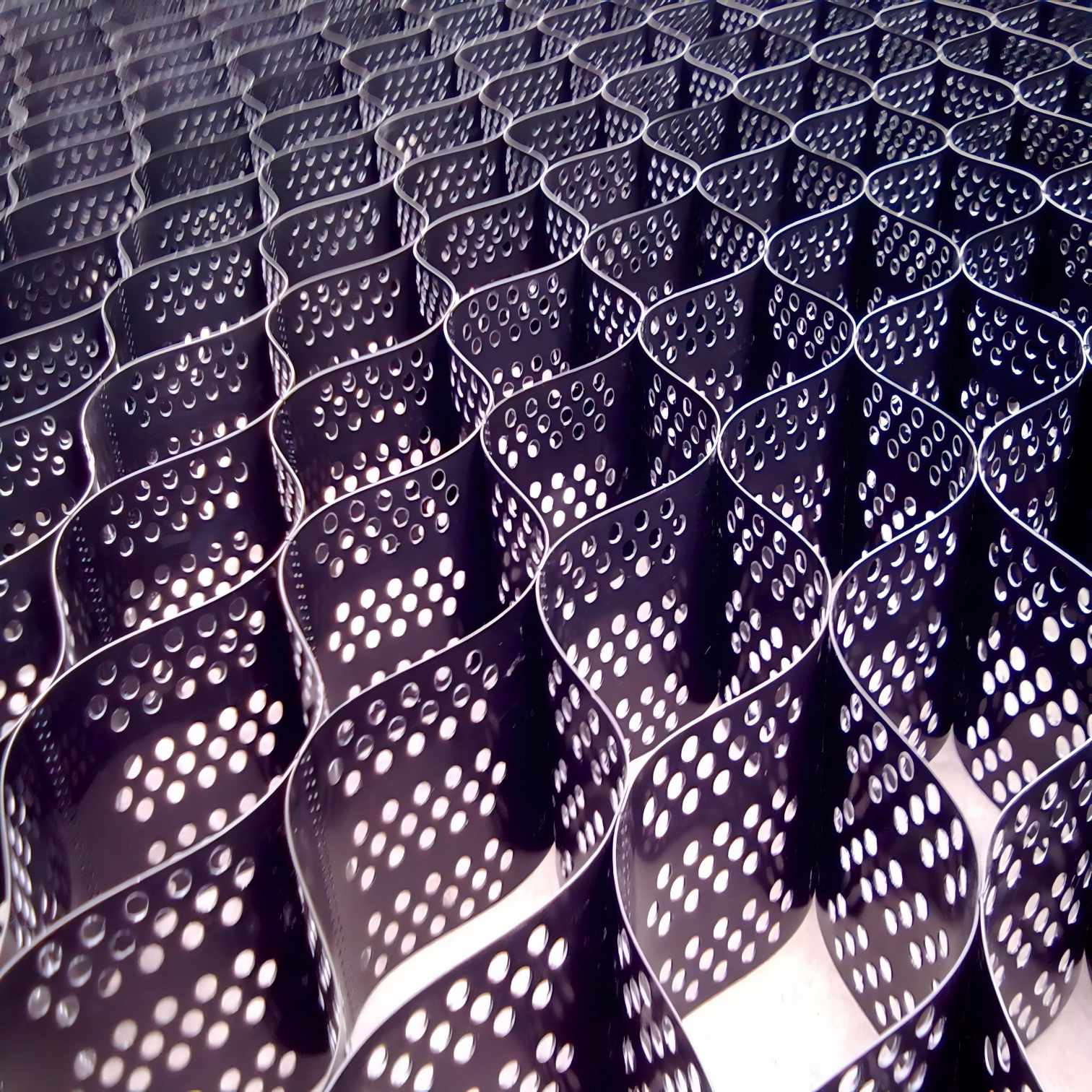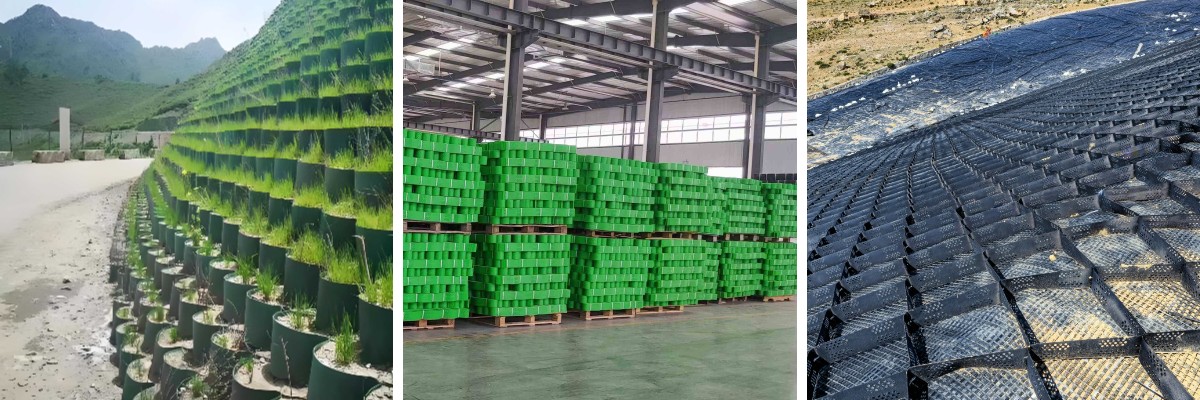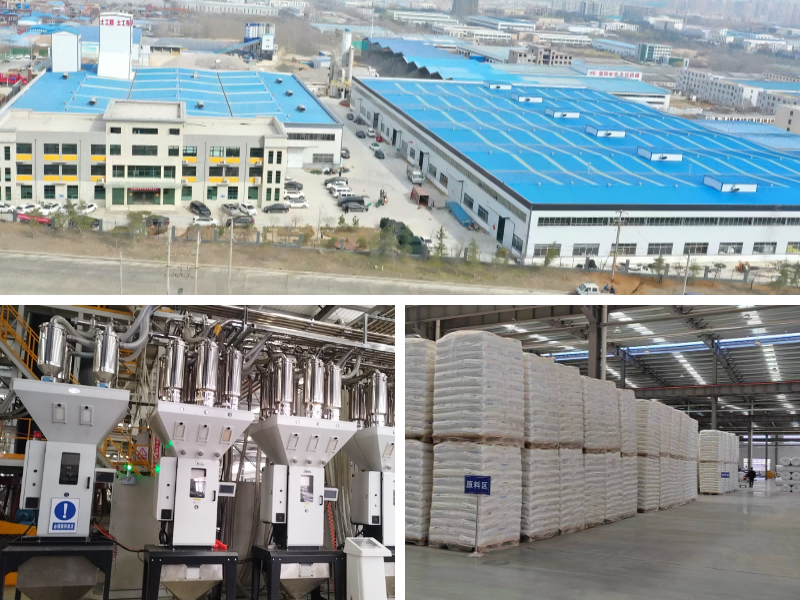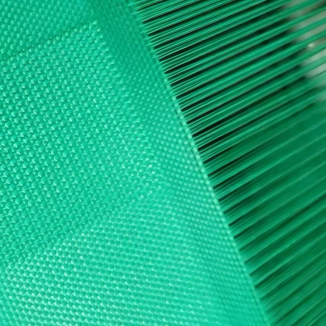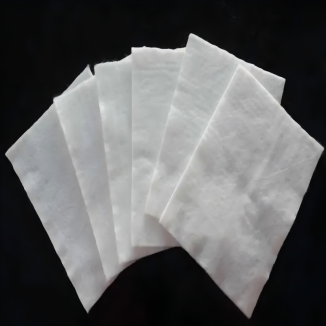Geocells For Erosion Control
1.Strong corrosion resistance: Due to the chemical inertness of the HDPE or PP materials used, they have a natural resistance to acid and alkali media. In an environment with a pH value of 2 - 12, the mass loss rate of the material is less than 0.5% per year. It can maintain good performance in harsh environments such as saline - alkaline areas, acidic soil regions, or industrial pollution sites, and can resist the erosion of chemical substances in the soil and environment for a long time.
2.Good anti - aging performance: By adding antioxidants and UV stabilizers, the anti - aging performance of the geocell is significantly improved. After 5000 hours of xenon lamp aging test, its tensile strength retention rate is still over 85%. It can maintain functional integrity under natural environments such as long - term exposure to sunlight and rain, extend its service life, and continuously play an anti - erosion role.
3.Distributed load: It can evenly distribute the load acting on it to the surrounding soil, reducing local stress concentration in the soil, improving the bearing capacity of the entire structure, enabling the foundation to better withstand the upper loads, such as vehicle loads and the self - weight of buildings, etc., and thus reducing soil erosion and foundation settlement caused by excessive loads.
Product Introduction:
Geocells For Erosion Control are new type of geosynthetic material.
Materials and Structure
Materials: It is mainly made of high-strength high-density polyethylene (HDPE) or polypropylene (PP) copolymer materials. These materials have excellent corrosion resistance, ultraviolet resistance, and good mechanical strength, enabling the geocell to maintain stable performance under various environmental conditions.
Structure: It presents a honeycomb-like three-dimensional reticular cell structure, which is made of reinforced HDPE sheet materials through high-strength welding or riveting. The unit size can be adjusted according to engineering requirements, usually controlled within the range of 100 - 400mm. This design achieves two-way restraint of the filled soil through the optimization of the sidewall opening rate and node strength
Product Parameters:
order number | raw and processed material | |||||||
test item | unit | polytene | sulan | polyester | ||||
Extruded type | Stretch type | Extruded type | Stretch type | Extruded type | Stretch type | |||
1 | tensile strength | kN/m | ≥20 | ≥100 | ≥23 | ≥100 | ≥30 | ≥120 |
2 | Tensile yield strain | % | ≤15 | — | ≤15 | — | ≤15 | - |
3 | Tensile fracture strain | % | — | 8~ 20 | — | 6~ 15 | — | 8~ 20 |
4 | Carbon black content a | % | 2. 0~ 3. 0 | |||||
5 | Carbon black dispersion a | — | There should be no more than one level 3 data item in ten data items and no level 4 or 5 data items | |||||
6 | 200℃ oxidation induction time | min | ≥20 | ≥20 | — | |||
7 | Tensile load stress cracking | h | ≥300 | — | ||||
8 | B. Resistance to artificial climate aging retention rateb | % | ≥80 | |||||
9 | Chemical resistance performance retention rate c | % | — | ≥80 | ||||
Product Applications:
Subgrade Reinforcement: It can improve the bearing capacity of the subgrade, reduce the settlement and deformation of the subgrade under the action of vehicle loads, and prevent the lateral displacement of subgrade materials. Especially in special geological conditions such as soft soil areas, collapsible loess areas, or saline soil areas, the application of geocells can significantly improve the performance of the subgrade and extend the service life of the road.
River channel treatment: It is used for the protection of riverbanks and riverbeds. It can resist the scouring of water flow, prevent riverbank collapse and riverbed siltation, maintain the stable shape of the river channel. At the same time, it can also provide a suitable living environment for aquatic plants and animals, contributing to ecological restoration and protection.
Slope protection: In the slope construction of projects such as highways and railways, geocells can fix the slope soil, prevent soil loss caused by rainwater erosion and weathering, enhance the stability of the slope, and reduce the risk of geological disasters such as landslides. For example, in the slope protection of mountainous expressways, by laying geocells and filling with suitable soil and vegetation, the slope can be effectively protected from erosion.
Mine Reclamation: For the abandoned sites after mine exploitation, geocells can be used to cover and fix waste residues, tailings, etc., preventing soil erosion and the spread of heavy metal pollution. At the same time, they provide good basic conditions for vegetation restoration, accelerating the restoration process of the mine ecological environment.
Desert governance: In desert areas, geocells can fix sand dunes, prevent wind erosion and sand dune movement. By filling the cells with soil and planting vegetation, the water retention capacity and fertility of desert soil can be improved, promoting vegetation growth and gradually achieving desert greening and ecological restoration.
The erosion - resistant geocell has dual functions of "engineering protection" and "ecological restoration" in water conservancy projects. Through its synergistic effect with the soil - water environment, it can not only solve engineering problems such as water flow scouring and bank slope instability, but also provide a carrier for the restoration of the aquatic ecosystem. It is an important material for ecological and sustainable construction in modern water conservancy projects.


